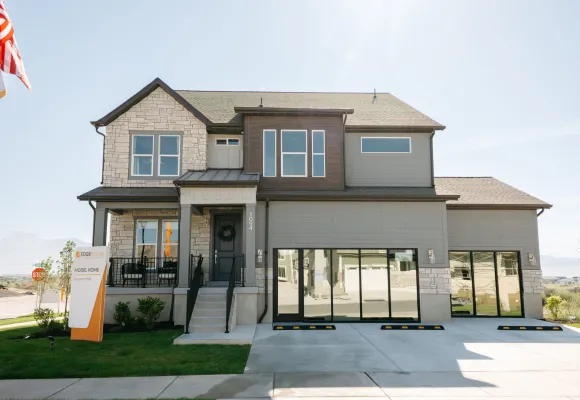Utah Real Estate | Homes, Land & Properties for Sale in Utah
If you’re looking to buy a home, invest in land, or explore property options in the Beehive State, the State of Utah real estate market offers a dynamic mix of opportunity and challenge. Thanks to strong job growth, scenic landscapes, and a rising population, many people are drawn to Utah’s housing market. At the same time, rising prices and mortgage rates mean buyers and sellers must enter with their eyes open.
In this article, we’ll cover the current market landscape, what kinds of properties you can find (homes, land, and development opportunities), and what to watch out for if you’re seriously considering a purchase in Utah.
Current Market Snapshot
The Utah housing market in Utah division of real estate is showing signs of both resilience and gradual moderation.
- The statewide median home price for all residential properties is around $519,498, with many homes valued at about $540,000.
- In Salt Lake County, for example, the median sale price has climbed to approximately $562,000, up about 5% year-over-year.
- Inventory is also increasing: listings have grown significantly compared to last year, giving buyers more options.
- However, affordability challenges persist: mortgage rates still hover around the 6%-7% range, which tightens budgets for many buyers.
What it means: The real estate Utah market is not in free-fall nor hyper-competitive like it was in the pandemic’s peak. Rather, it is moving toward a more balanced state. Buyers now may enjoy slightly more leverage, while sellers need to be realistic about pricing and timing.
Types of Properties & Opportunities
1. Single-Family Homes
Homes remain the most common entry point. Whether in urban neighborhoods of Salt Lake City or suburban regions like Draper and Herriman, you’ll find various styles and price tiers. Suburban areas continue to draw buyers seeking more space while retaining proximity to employment hubs.
2. Land & Development Parcels
For those looking to build or invest, land in Utah is a key segment. The growth of areas “just outside” primary metro zones means development opportunities, especially for multi-family or new construction homes. However, new construction has slowed, which could restrict supply in the short term.
3. Investment Properties & Secondary Markets
Buyers and investors are looking at properties beyond the primary urban markets — smaller cities such as Ogden, Logan, and locations with growth potential. These can offer better affordability and upside relative to the larger metros according to Utah Wholesale Homes.
What’s Driving Demand & What to Watch
Demand Drivers
- Population growth and in-migration: Utah continues to add residents at a strong pace, which underpins housing demand.
- Strong local economies: The tech corridor—often called the “Silicon Slopes”—in Utah supports job growth and attracts professionals.
- Lifestyle appeal: Outdoor amenities, familyfriendly communities, and quality of life are big draws for many buyers.
Key Considerations
- Affordability and mortgage rates: Even though prices may stabilize, high interest rates are a barrier for many.
- Supply constraints: While inventory is rising, new construction is below the levels needed to fully satisfy demand.
- Local market variation: Utah is not one monolithic market. Cities, counties, and neighborhoods vary considerably in price trends and inventory.
- Land use and building costs: For land and development parcels, zoning, infrastructure, and construction cost trends matter a lot.
Tips for Buyers & Sellers
For Buyers
- Get pre-approved: With competitive elements and rates that matter, being ready helps.
- Focus on value: Look for neighborhoods with good upside, not just the hot ones.
- Consider timing: More listings mean more choice, but pricing may not drop dramatically — aim for a realistic budget.
- Inspect thoroughly: Especially for land purchases, check infrastructure and zoning status.
For Sellers
- Price intelligently: Over-pricing risks sitting on the market longer as competition increases.
- Prepare your home: With inventory growing, presentation and staging matter more.
- Know your market: Local trends (days on market, list-to-sale ratio) vary widely.
- Be open to concessions: Buyers may expect flexibility on closing costs, rate buydowns or other incentives.
Conclusion
The Utah real estate market offers a compelling blend of strengths—steady demand, quality of life, job growth—but also rational caution points such as affordability and rising inventory. Whether you’re looking for a home, willing to invest in land, or exploring rental/investment property opportunities, staying informed about local trends in cities like Salt Lake City, Draper, Ogden and beyond is key.




